
PACIFIC CONSERVATION BIOLOGY
Scope & Guideline
Advancing ecological insights for the Pacific's unique biodiversity.
Introduction
Aims and Scopes
- Biodiversity Conservation:
The journal primarily concentrates on the conservation of various species and ecosystems, with an emphasis on endemic and threatened species in the Pacific region. - Ecological Research and Monitoring:
Research methodologies include ecological assessments, population monitoring, and habitat evaluations to inform conservation strategies and enhance biodiversity management. - Cultural and Indigenous Perspectives:
PACIFIC CONSERVATION BIOLOGY integrates indigenous knowledge and cultural practices in conservation efforts, recognizing the importance of traditional ecological knowledge in managing natural resources. - Invasive Species Management:
A significant focus is placed on the identification, impact assessment, and management of invasive species that threaten native biodiversity in Pacific ecosystems. - Climate Change and Environmental Impact Studies:
The journal addresses the effects of climate change on biodiversity, providing insights into adaptive management strategies that can mitigate adverse impacts on ecosystems. - Community Engagement and Citizen Science:
Promoting community involvement in conservation efforts through citizen science initiatives is a recurring theme, highlighting the role of local populations in biodiversity monitoring and protection.
Trending and Emerging
- Impact of Climate Change on Biodiversity:
There is a growing emphasis on studying the effects of climate change on species distribution, population dynamics, and ecosystem resilience, reflecting urgent global environmental concerns. - Conservation Technology and Innovation:
The use of technology in conservation, such as remote sensing, environmental DNA analysis, and innovative monitoring techniques, is increasingly prevalent, showcasing advancements in research methodologies. - Restoration Ecology:
An emerging focus on ecological restoration practices, including habitat restoration and rehabilitation of degraded ecosystems, underscores the journal's commitment to active conservation strategies. - Marine Conservation and Fisheries Management:
Recent trends highlight a rising interest in marine biodiversity conservation, sustainable fisheries practices, and management strategies for marine protected areas, reflecting the importance of ocean health. - Socio-Ecological Systems:
Research integrating social science perspectives with ecological studies is gaining traction, emphasizing the interconnectedness of human and natural systems in conservation efforts.
Declining or Waning
- Traditional Ecological Knowledge (TEK):
Although still relevant, the emphasis on traditional ecological knowledge has waned slightly as the journal has increasingly featured more empirical research and quantitative studies over qualitative assessments. - In-depth Taxonomic Studies:
Research focusing on detailed taxonomic classifications and descriptions of new species appears to be less frequent, possibly overshadowed by broader ecological and conservation-focused studies. - Historical Ecology:
There is a noticeable decrease in research that emphasizes historical ecological contexts and long-term ecological changes, as current studies tend to favor contemporary assessments and urgent conservation actions.
Similar Journals
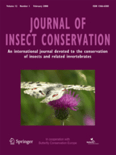
JOURNAL OF INSECT CONSERVATION
Connecting Research and Conservation Efforts in Insect ScienceJOURNAL OF INSECT CONSERVATION, published by SPRINGER in Switzerland, is a leading peer-reviewed journal that focuses on the preservation and study of insect biodiversity and ecology. With an ISSN of 1366-638X and E-ISSN 1572-9753, this journal represents a vital resource for researchers and practitioners in the fields of Animal Science, Ecology, and Insect Science. The journal consistently ranks among the top quartiles, achieving Q1 status in Animal Science and Zoology and Q2 in other pertinent categories in 2023, according to Scopus rankings. This reflects its significant influence in the academic community, with a solid impact factor that highlights its importance in advancing the discourse on insect conservation. Though not an open access journal, it provides critical insights and innovative research findings from 1997 to 2024, making it an essential platform for those involved in the conservation of insect species and their habitats. As a scholarly resource, the JOURNAL OF INSECT CONSERVATION is dedicated to fostering knowledge dissemination and inspiring future research in pressing environmental issues.
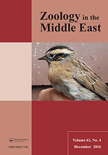
ZOOLOGY IN THE MIDDLE EAST
Pioneering Research on Middle Eastern WildlifeZoology in the Middle East, published by Taylor & Francis Ltd, is a pivotal journal dedicated to advancing the field of zoological research with a distinct focus on the rich and diverse fauna of the Middle Eastern region. With its ISSN of 0939-7140 and an E-ISSN of 2326-2680, this journal has successfully carved out a niche for itself since its inception in 1986, covering topics of significant relevance to animal science and zoology, as evidenced by its Q2 ranking in the 2023 category quartiles. Although it operates as a subscription-based journal, it aims to disseminate high-quality research articles, reviews, and case studies that contribute to the understanding of animal biodiversity and conservation in the Middle East. With a Scopus ranking placing it in the 38th percentile of the agricultural and biological sciences category, Zoology in the Middle East serves as an essential resource for researchers, professionals, and students who seek to deepen their knowledge and appreciation of the region's zoological heritage. Scholarly contributions to this journal not only enhance scientific discourse but also inform conservation strategies and policy-making in an area that is critical to global biodiversity.

ACTA ZOOLOGICA BULGARICA
Connecting Researchers to the Pulse of ZoologyACTA ZOOLOGICA BULGARICA is a prominent academic journal dedicated to advancing knowledge in the fields of Animal Science, Zoology, Aquatic Science, Ecology, Evolution, Behavior, and Systematics. Published by the Institute of Zoology, Bulgarian Academy of Sciences, this journal serves as an invaluable platform for researchers, professionals, and students to disseminate their findings and engage with contemporary issues in biodiversity and ecology. With an established history since its convergence in 2010 and an ongoing publication schedule through to 2024, the journal holds a Q4 category ranking in multiple disciplines, highlighting its role in fostering scholarly communication in these areas despite its recent entry into Scopus-indexed rankings. Although currently not an open-access journal, ACTA ZOOLOGICA BULGARICA remains a key resource for those interested in the latest research and developments, particularly within the ecological and zoological landscapes of Europe and beyond.
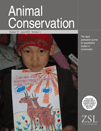
ANIMAL CONSERVATION
Transforming Insights into Action for Animal Conservation.Animal Conservation is a prestigious journal that serves as a vital platform for the dissemination of research dedicated to the preservation of wildlife and habitats. Published by Wiley, this journal has established a significant presence in the fields of Ecology and Nature and Landscape Conservation, holding a distinguished Q1 category ranking for both in 2023. With an impressive Scopus rank of #25 in the realm of environmental science, it caters to a global audience keen on understanding and addressing pressing conservation issues. The journal provides researchers, professionals, and students with high-quality, peer-reviewed articles that explore innovative methods and strategies in animal conservation. With its continuous publication since 1998, encompassing a comprehensive range of topics, Animal Conservation is indispensable for anyone aiming to make impactful contributions to the field of ecology and conservation biology.
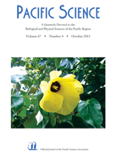
PACIFIC SCIENCE
Empowering Voices Through Pacific ScholarshipPACIFIC SCIENCE is a prestigious multidisciplinary journal published by University of Hawaii Press, dedicated to advancing knowledge across diverse fields of study related to the Pacific region. With a robust ISSN of 0030-8870 and an E-ISSN of 1534-6188, this journal serves as a vital platform for researchers, professionals, and students to disseminate and access influential research findings that contribute to the understanding of ecological, cultural, and social dynamics in the Pacific. The journal has steadily maintained its relevance since its inception in 1947 and features a commendable Scopus Rank of #74 out of 171 in the multidisciplinarity category, placing it in the 57th percentile of its field, and is recognized as having a Q2 quartile ranking in 2023. Although lacking open access options, PACIFIC SCIENCE offers in-depth analysis and scholarly discourse, effectively bridging various disciplines to foster collaboration and innovation. With its commitment to high-quality research and its significant impact on Pacific studies, the journal continues to play an important role in informing policy, conservation efforts, and community engagement within this vital region.
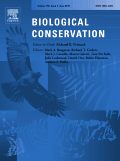
BIOLOGICAL CONSERVATION
Fostering Innovative Solutions for Ecological Challenges.BIOLOGICAL CONSERVATION, published by Elsevier Science Ltd, is a leading international journal dedicated to advancing the science and practice of biological conservation. Since its inception in 1968, the journal has provided a critical platform for researchers, professionals, and students in the fields of Ecology, Evolution, Behavior, and Systematics as well as Nature and Landscape Conservation. With an impressive impact factor, and ranked in the Q1 category within both ecological and conservation domains in 2023, it emphasizes high-quality empirical and theoretical research essential for understanding and addressing pressing environmental challenges. Although it follows a subscription model, the journal is known for its rigorous peer-reviewed articles that contribute significantly to the field, ensuring that the latest findings and methodologies are readily accessible to practitioners. As a vital resource for those engaged in conservation efforts globally, BIOLOGICAL CONSERVATION stands out for its commitment to enhancing knowledge and informing strategies that safeguard biodiversity across ecosystems.

Journal of Asia-Pacific Biodiversity
Illuminating the path to biodiversity conservation and sustainability.Journal of Asia-Pacific Biodiversity is an esteemed academic journal dedicated to advancing knowledge in the dynamic fields of biodiversity, ecology, and related biological sciences. Published by the NATL SCIENCE MUSEUM & KOREAN NATL ARBORETUM, this journal serves as a crucial platform for researchers and professionals seeking to explore and disseminate impactful findings pertaining to the Asia-Pacific region's rich biological diversity. With an E-ISSN of 2287-9544, the journal is indexed in leading databases, achieving a Q3 ranking across various categories in 2023, including Animal Science and Zoology, Ecology, Insect Science, and Plant Science. It strives to unite scientific research across disciplines, thus fostering a deeper understanding of ecological dynamics and conservation efforts within this vital region. The journal operates with an open access policy, ensuring that findings are widely available for widespread benefit, making it an essential resource for students, researchers, and environmental practitioners alike. Since its initiation in 2013 and continuing through 2024, the journal remains committed to delivering high-quality, peer-reviewed articles that contribute significantly to the global conversation on biodiversity and ecosystem sustainability.
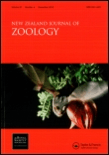
NEW ZEALAND JOURNAL OF ZOOLOGY
Exploring the Depths of Animal Science.NEW ZEALAND JOURNAL OF ZOOLOGY, published by Taylor & Francis Ltd, offers a crucial platform for the dissemination of high-quality research in the field of zoology and animal science. With an ISSN of 0301-4223 and an E-ISSN of 1175-8821, this journal has been a valuable resource since its inception in 1974 and continues to contribute significantly to the academic community, with a converged years span extending to 2024. The journal holds a commendable Q3 ranking in the 2023 category of Animal Science and Zoology, and ranks #175 out of 490 in Scopus, placing it in the 64th percentile of its category. While it is not an Open Access journal, researchers can still access a wide range of studies that delve into various aspects of zoology. With its robust editorial standards and commitment to advancing knowledge in animal science, the NEW ZEALAND JOURNAL OF ZOOLOGY serves as an essential resource for researchers, professionals, and students interested in the complexities of wildlife and ecological studies.

AUSTRALIAN JOURNAL OF ZOOLOGY
Fostering Knowledge for a Sustainable FutureAustralian Journal of Zoology, published by CSIRO PUBLISHING, serves as a premier platform for research in the fields of animal science and zoology, with a profound commitment to advancing our understanding of wildlife and ecosystems. Featuring an ISSN of 0004-959X and an E-ISSN of 1446-5698, this esteemed journal encompasses a wide range of topics relevant to ecology, evolution, behavior, and systematics. For the year 2023, it holds a commendable Q2 ranking in both Animal Science and Zoology and Ecology, Evolution, Behavior, and Systematics, demonstrating its significant impact within the academic community. With a rich publication history spanning from 1952 to 2024, the journal caters to researchers, professionals, and students by disseminating crucial findings and methodologies that contribute to effective conservation efforts and informed ecological practices. Although not an open access journal, it continues to foster collaboration and discussion among scholars in Australia and beyond. Located in Clayton, Victoria, the journal remains dedicated to its objective of enhancing knowledge in zoological sciences and addressing vital environmental challenges.
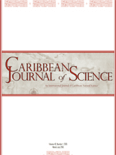
CARIBBEAN JOURNAL OF SCIENCE
Empowering scientific growth across the Caribbean.Caribbean Journal of Science, published by the University of Puerto Rico, serves as a crucial platform for disseminating innovative research in the field of science across the Caribbean region. With an ISSN of 0008-6452, this journal captures the essence of multidisciplinary studies, ranking 47 out of 111 in its category, showcasing a 58th percentile within Scopus. Although it doesn't currently offer Open Access, it has extended its academic reach since its inception in 1980, fostering collaboration and knowledge growth among researchers, professionals, and students alike. The journal covers an expansive range of scientific disciplines and continues to be a vital resource for those seeking to engage with and contribute to the scientific landscape of the Caribbean. For anyone dedicated to advancing scientific inquiry and practice in this vibrant region, the Caribbean Journal of Science represents an invaluable asset.